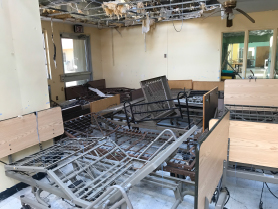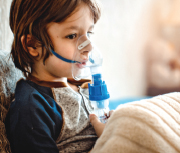Disasters and other public health emergencies impact more than homes, roads and buildings. Such emergencies can affect the community’s health infrastructure and ability to access medical care, can disrupt child care and schools, and can adversely affect the behavioral health and social well-being of community members. These issues can create challenges for individuals, families, and communities that persist for months or even years. These issues impact individuals, families and communities in ways that persist for months and often years.
Distinct from the problems common in emergency response, challenges to disaster recovery often are more subtle, pervasive, and more likely to grow out of control if not addressed systematically. Just as every disaster is different, every community is also different. Our teams must be aware that we’re guests of the communities we serve. By listening and taking the lead from states, tribes, territories, and local communities to set priorities, HHS can provide a more effective and targeted level of support.
Federal partners can help speed disaster recovery

The Assistant Secretary for Preparedness and Response (ASPR) Recovery Division, within the U.S. Department of Health and Human Services (HHS), coordinates the federal Health and Social Services Recovery Support Function (HSS RSF). The HSS RSF represents a coalition of 17 federal agencies with programmatic equities, expertise, and capabilities to enable a locally led disaster recovery to the health and social services needs of survivors that is more effective, more efficient, and more sustainable over the marathon of the community’s recovery.
HHS, with its partner agencies across the Health and Social Services Recovery Support Function (HSS RSF), use their expertise, legislative authorities, and resources to help support the recovery priorities of communities struck by disasters. The goal is to reduce human suffering and loss of life, improve readiness for future disasters, and increase resilience.
HHS teams never forget that we are guests of the communities we serve. Whether a natural disaster, industrial accident, act of terrorism, or public health emergency, the HSS RSF disaster recovery team provides a structured approach for impacted states, tribes, territories, and local governments to address the complex and interconnected recovery issues.
Ultimately, through the HSS RSF, the ASPR Disaster Recovery Division shortens the distance between resource need and resource provider – whether that resource is information and data to improve decision-making or knowledge about how to plan, strategize, and allocate scarce resources.
Before a disaster

ASPR disaster recovery experts collaborate with federal partners to work with state, tribes, territories, and local communities to support their recovery planning initiatives, training activities, and preparedness exercises. ASPR provides technical assistance to help build capacity to address the complex array of issues common during disaster recovery on request.
After a disaster
The ASPR Disaster Recovery Division and its role in leading the entire HSS RSF on behalf of the Secretary provide technical assistance that helps local and state agencies identify specific barriers to recovery.
We focus on problem-solving to help restore and build capacity of health and social services networks impacted by disasters. Based on the issues and barriers determined, the recovery team works with partners to identify funding opportunities, offers technical expertise to fill critical gaps in recovery capabilities, and provides data to support community decision making and future planning.
Through these actions, we strive to improve the efficiency and effectiveness of recovery operations across the entire country to make for a more resilient nation.
Nine Core Mission Areas of the HSS RSF
Core Mission Area
|
Core Mission Area
|
Issues Related to:
|
|
Public Health
|
Public health capabilities like laboratory capacity, disease surveillance, and health risk communication
|
|
Healthcare Services
|
Damages to Hospitals, clinics, nursing homes, dialysis centers, and other service providers; in addition to the impacts to their workforce and capacity to provide healthcare services
|
|
Behavioral Health
|
Disaster-related impacts to behavioral health facilities, programs, and survivors
|
|
Environmental Health
|
Post-disaster conditions impacting the health and safety of the air, water, soil, and built environment
|
|
Food Safety and Regulated Medical Products
|
Needs to protecting critical regulated medical products and the safety of the food supply
|
|
Long-term Responder Health Issues
|
Addressing the physical and emotional health of first responders in the impacted community
|
|
Social Services
|
Disaster impacts to community support services, senior centers, homeless shelters, services for the disability community, and services for at-risk populations
|
|
Disaster Case Management/ Referral to Social Services
|
Helping individuals and families with their specific disaster-related unmet needs
|
|
Children and Youth in Disasters/Schools
|
Coordination of health and social services needed for children and youth
|
*A printable factsheet is available.

